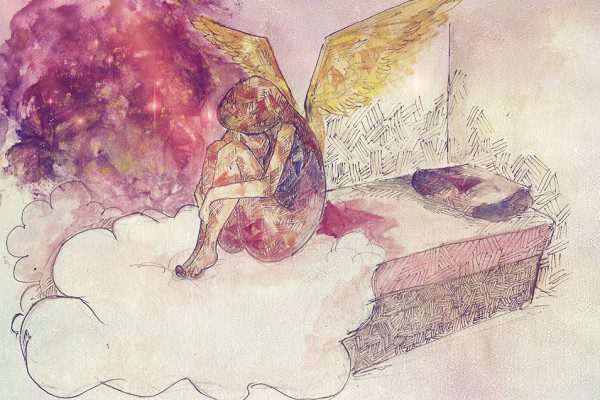The Brahmaputra motivates enduring emotions of love, pride, compassion, anger and despair, writes Debashree Dattaray.
“And over the village slipped the days, passing into the nights; the weeks flowed by, the months crept on, the wind howled, and, glassified with an autumnal, translucent, greenish-azure, the Don flowed tranquilly down to the sea.”
—And Quiet Flows the Don (1934)
Closer home, the Brahmaputra—also known as the Luit—has been a potent symbol of the irreversible passage of time, of destruction, of creativity, of fertility and of the endless possibilities of human agency in the nebulous contours of the Northeast. Mamang Dai, a noted poet from Arunachal Pradesh, writes,
The image of the North East region of the country is that it is a mosaic of tribal culture. That it is very remote. That it is full of trees and mountains and that it is a troubled place with lots of insurgency and army, and counter insurgency operations. All of this is true. Many people also associate the region with a beautiful landscape, a naturalist’s paradise, a land of big rivers and colourful festivals in worship of benevolent gods and goddesses. All this is also equally true. So what have we got here then? There is conflict and there is tranquility.
The towering presence of the Luit reflects the ambiguity inherent in the ethos of the Northeast. For the people who depend upon the river for their livelihood and their very existence, it is both a source of reverence and exasperation.
The towering presence of the Luit reflects the ambiguity inherent in the ethos of the Northeast. It is both a source of reverence and exasperation.
The Luit is located in the intersection of physical space and time and mythic space and time. In ancient times, the river has been called by many names—lauhitya, hiranyo, mandakini, hridini, khatai, brahmi, karkaya and digam. Known as the Siang in Arunachal Pradesh, the Luit in Assam, the Surma in the Barak Valley, the Tilao in Tai and Bodo and Taluk in the Singpho-Mishimi languages, the many names of the river testify to a deeply embedded historical and cultural consciousness of the Northeast: a simultaneous confluence of the past and the present. No wonder the Luit has been a pervasive symbol of resistance and resilience in poetry, music and dance from the Northeast, particularly in Assam.
The word ‘Luit’ derives from the Assamese ‘Lohit’, which means blood. It refers to the mythological tale of Parashuram’s murder of his own mother, Renuka. At the behest of his father Yamadagni, who suspects his wife of adultery, Parashuram beheads his mother with his axe. As punishment for matricide, the axe is stuck to his hand and he is unable to detach it.
On the advice of sages, Parashuram embarks on a pilgrimage and finally reaches the “Parashuram Kunda”, located 25 km north of Tezu in the Lohit district of Arunachal Pradesh. According to the myth, the river was then a small kund, or lake surrounded by hills. Parashuram cuts down the hills on one side and releases the water for the common good of people in the region. As the consequence of this noble deed, the axe comes off from his hand, and Parashuram is absolved of his sins.
Over the years, the Luit has been kept alive in the collective memory of the Northeast through mythological tales, fragmented memories and through a relentless quest for identity in the throes of social and cultural exclusion, loss of land and livelihood, and political marginalisation.
The myth narrates how the mighty river continues its long journey, disregarding physical impediments and keenly aware of the reality that surrounds it. Over the years, the Luit and the Luitpaar (Banks of the Luit) have been kept alive in the collective memory of the Northeast through mythological tales, fragmented memories and through a relentless quest for identity in the throes of social and cultural exclusion, loss of land and livelihood, and political marginalisation. It reflects an entire culture as it has evolved through history.
In the early part of the 20th century, Jyoti Prasad Agarwala (1903-1951) wrote songs dedicated to the Luit. He believed that “From the Luit I move to the sea/And search for pearls.” A revolutionary poet, dramatist and director of the first Assamese film Joymoti (1935), his collection of over 300 songs known as ‘Jyoti Sangeet’—many of which he set to his own music—invoked a new found pride in Assamese language and culture.
His songs gave a clarion call for a new Assam built on the banks of the Luit with the refrain: “Luitar Parore Ami Deka Lora/Moribole Bhoi Nai.” (“We are the youth from the banks of the Luit/We are not afraid of death”). The Luit calls for a rejuvenated Assam, relentless and brave in the nationalist struggle for freedom.
Insurgency, natural calamities, warfare—the Brahmaputra has also been privy to the different historical chapters in the tumultuous Northeast.
Insurgency, natural calamities, warfare—the Brahmaputra has also been privy to the different historical chapters in the tumultuous Northeast. The contemporary Assamese poet Rini Barman speaks of a time when the “Brahmaputra Bleeds”:
They have called me the ‘red’ river,
Drawn me as a landmark on the map
Which I realise is a cruel farce!
They have
Acquainted me with spilled blood
Of sprouting school children,
I can’t forget how much I wept
When these merry cities were bombarded
yelling widows, sisters and mothers now childless
Left only with bitter memories and hazy ashes
Another budding poet, Uddipana Goswami, narrates tales of violence witnessed at the banks of the red river—the Luitpaar—as follows: “We called the river red…we drowned our gods in the red river/where we drained the blood from our souls/And thought: now this is how we pray.”
Again, Mamang Dai in her poem ‘The Missing Link’ writes of how the Siang river remained unexplored by the Survey of India: “there are no records/the river was the green/and white vein of our lives,/linking new terrain in a lust for land…” The Luit is an indispensable part of life.
The Luit motivates enduring emotions of love, pride, compassion, anger and despair. Majuli, the river island of the Brahmaputra and a hub of neo-Vaishnavite satras and a treasure trove of devotional Borgeet and Satriya dances, has had a precarious relationship with the overwhelming river which encroaches into the island every year.
Dr Bhupen Hazarika’s song ‘Bistirno parore’ expresses anger and sadness at the indifference of the Burha Luit as follows: “Noitikotar skhalan dekhiu/Manabotar patan dekhiu/Nirlajja alas bhawe buwa kiyo?” (“Witnessing the degeneration of morality/Perceiving the degradation of humanity/How do you continue to flow so shamelessly and nonchalantly?”). He had expressed his sadness at how the river had swallowed up the place of his birth, Sadiya, after the massive earthquake of 1950. In another song, ‘Mahabahu Brahmaputra Mahamilanar Tirtha’, Hazarika looks into the Brahmaputra as a confluence of different religions through the teachings of Sankardev, Ajan Fakir and Guru Teg Bahadur.
Interestingly, Hazarika was a protégé of none other than Jyoti Prasad Agarwala, who had been enthralled by a ten-year-old Hazarika rendering a Borgeet at Tezpur in 1936. He selected the young boy to sing for his movie Indramalati, thus ensuring the remarkable stardom of the singer and the eternal celebration of the Luit in the hearts of the people of Assam and beyond.
Epitomising one of the most long-standing relationships with the Luit through his extensive repertoire, Hazarika came to be known as the balladeer of the Brahmaputra.
Epitomising one of the most long-standing relationships with the Luit through his extensive repertoire, Hazarika came to be known as the balladeer of the Brahmaputra. “This river is the main source of inspiration not just for me but for everyone living by it,” he once said. “Life, culture, economy, and the happiness and sorrow of the people in Assam are inseparable from the river.” Inspired by Paul Robson’s ‘Ol’ Man River’, Bhupen Hazarika’s soulful rendition of “Bistirna paarore/Ahonkhya jonre/Hahakar huniu/Nihobde nirobe/Burha luit tumi/Burha luit buwa kiyo?” would be a source of sustenance and determination for the people of Assam.
Like the great rivers—the Volga, the Nile, the Rhine and the Mississippi—the Luit remains triumphant through the ages, crossing all borders and boundaries as it unites with the sea. Prodding villages and towns to wakefulness, it glides ahead with a merry laugh, weaving vibrant yarns of hopefulness and promise from the hills of the North East: “Jilikabo luitore par…” (“The banks of the Luit will shine…”)
References:
- Dai, Mamang. 2004. River Poems. Kolkata: Writers Workshop.
- Dai, Mamang. “North East Poetry”. http://www.museindia.com/viewarticle.asp?myr=2006&issid=8&id=346” (Accessed on 19/08/15)
- Goswami, Uddipana. 2010. We Called the River Red, Poetry from a Violent Homeland. New Delhi: Authors Press.
- https://amiasomiya.wordpress.com/the-reverberation-english-section/article/social-consciousness-in-dr-bhupen-hazarikas-song-special-review-on-jyoti-and-bishnu-sangeet/ (Accessed on 19/08/2015)
- http://nelitreview.blogspot.in/2011/11/poeunsung-and-brahmaputra-bleeds-poems.html (Accessed on 19/08/2015)















